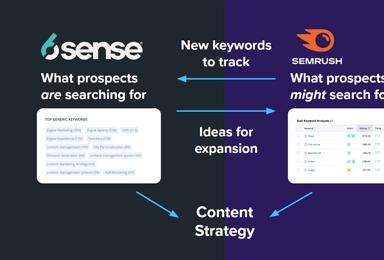Marketing Automation, Meet Drupal
Oh, hi there. I’d be lying if I said I wasn’t expecting you. This is a blog after all. And supposedly people read these things, which is, supposedly, why you’re here. So pull up a seat (if you’re not already sitting) and I’ll tell you why Drupal is a great partner for Marketing Automation.
Ah, Marketing Automation. (Hereafter MA, because why read 7 syllables when you can read 2?) It’s arguably the most hyped business technology of the last decade or so, spoken about in hushed tones, as though simply subscribing to a platform will print money for you. Sadly that’s not the truth. But when used properly with digital strategy, it’s pretty good at what it does: capturing latent demand and turning it into sales. The tricky part is the modifying clause that opened the last sentence, “when used properly.”
What to expect from Marketing Automation?
Marketing Automation tools and platforms these days come loaded with bells and whistles: from custom reporting engines to fancy drag-n-drop campaign UIs, and WYSIWYGs that let marketers build digital assets like landing pages and emails. And yet, despite all that fanciness, it’s still really hard to do Marketing Automation right. Why? Well, leaving aside strategic questions (a massive topic on its own), my own experience with MA always left me wanting two things - expressibility and scalability.
Drupal + Marketing Automation
While publishing workflows in Marketing Automation, tools have improved over the years. They still can’t compete with a CMS; particularly one as powerful as Drupal. Drupal empowers users to express content in terms that go far beyond simple landing pages.
In fact, Drupal is used today for just about anything you can imagine, from powering Fortune 500 marketing websites to running weather.com and acting as the backbone of custom web applications. What’s possible with Drupal is really up to you. Just ask the guy who built it.
So, fine. Drupal is great and everything. But how does it help your marketing? Well, because Drupal is so flexible, you can integrate it with almost anything: like Google Analytics, Pardot, Marketo, Eloqua, Salesforce, and on, and on, and on. In a quickly changing technology landscape that’s an incredible strength because it acts as the nervous system for your marketing technology stack.
“Marketing technology stack?” Yeah, I don’t like business jargon, either. But, it’s a helpful way to think about digital marketing tools. Because they are just that: tools with strengths and weaknesses. You probably wouldn’t use a screwdriver to drive a nail into the wall. Sure, you could, but there’s a better tool for the job: a hammer. Likewise, your MA platform could power all your digital assets, but there’s a better tool for that job, too: Drupal.
The right tools for the job
In my experience, organizing these tools around their strengths brings better results. And here at Elevated Third, we’ve done that by connecting Drupal to Marketing Automation platforms like Pardot, Marketo, and SharpSpring; using it as the front end for services that are powering marketing programs. And moreover, MA is only a piece of that puzzle. Want to use something like HotJar? Drupal is happy to.
Open source means flexibility
So where does this flexibility come from? Drupal is Open Source Software and there’s a massive developer community that improves it daily. Probably the strength of open source software is its flexibility.
You don’t like the way something works? Easy. Let’s change it.
Is something broken? No problem, let’s fix it.
Got a new problem that off-the-shelf solutions don’t solve? Well, then, let’s build a solution for it.
Is Drupal the right tool for every job? I’d be lying (again) if I said it was. But it’s the right tool for jobs that require unique, flexible solutions. And it could be the right tool for your job, too. If you are curious, let's talk.
